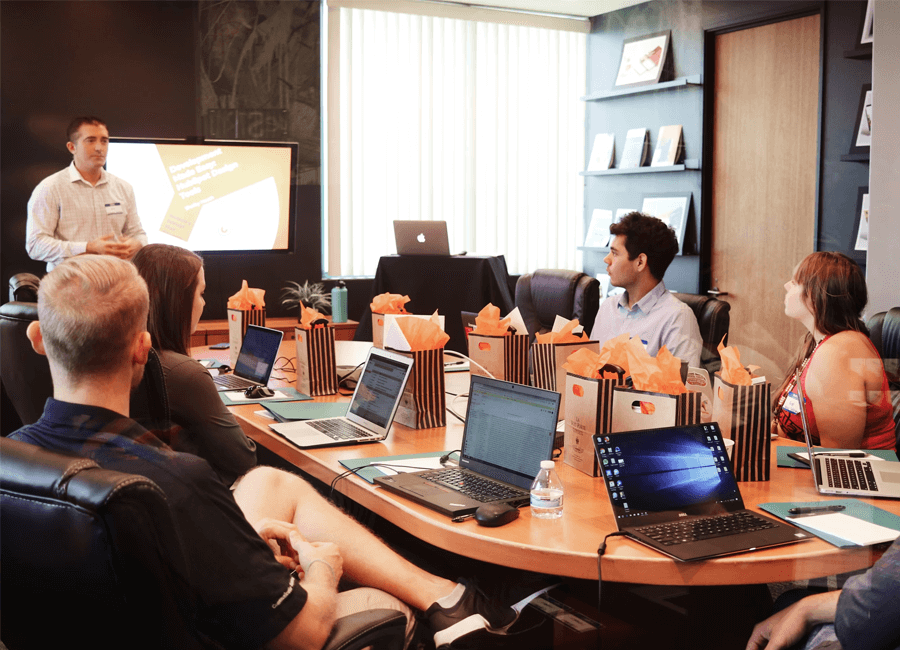In today’s day and age, it is hard for insight experts to imagine that some stakeholders still don’t understand the true value and purpose of market research. In one instance, they might understand that they need market research, but they’re not sure what to do with the data or insights when they have them. Or, in another situation, stakeholders might not understand the true extent of how market research can help them build better business strategies, make more successful decisions on a daily basis and just how many facets of market research there are to gain a comprehensive understanding of their target customer base.
This remains the largest obstacle for many insight teams, and for those with the goal of building a culture of Customer Salience in their organisation, this stands in the way between them and success. So how do we overcome this? How do we educate stakeholders on this connection, on the value of market research and the power of Customer Salience all at the same time?
| Tweet This | |
| Without market research, there can be no true Customer Salience. These two concepts are inextricably linked through insights, but how do we communicate this to stakeholders? |
The Power of Market Research in the Pursuit of Customer Salience
Before we can teach it to stakeholders, we must first really understand and define the connection between Customer Salience and Market Research ourselves. Customer Salience, in a brief nutshell, is the act of understanding customers and taking their experiences, opinions and behaviours into account in daily decision-making processes. Market research, in another nutshell, is the process of understanding consumers, using a variety of methodologies, tools and tactics to gain actionable insights into consumer experiences, opinions and behaviours.
You can probably see where we’re going with this now, but the link between these two is insights. The insights from market research are the key to understanding customers and gaining a good sense of Customer Salience. These two concepts are inextricably linked.
Without market research, there can be no true Customer Salience. Without Customer Salience, there can be no assured business success in this new age where there are many competitors fighting for the same customers, and as such consumers hold more power when it comes to business success. To succeed in this world, companies need to provide the service that customers want and create the experience that customers want to go through to get the service, and to do that stakeholders need to make decisions with the customers firmly in mind alongside the other business interests.
There are many market research techniques, tools and teams at stakeholders’ disposal to achieve this, but while we have convinced a great number of stakeholders to use us wisely, there are others that remain in the dark and cannot use market research to the full extent as a consequence.
Educating Stakeholders
Going back to basics can seem like a step backwards when the industry has evolved so much, but educating stakeholders needs to happen gradually. It’s hard to understand the power of modern market research without first understanding the basics surrounding the purpose of market research, the different research designs available, the tools to use for what purpose and the need for insight experts in translating data into actionable insights. Even those stakeholders who do understand the basics will need reminding from time to time.
Stakeholders such as these will understand what a survey is, but maybe not the modern dangers surrounding bots, churn rates, engagement management, and more that insight teams take into consideration naturally. This will be the same for most of the commonly used tools in the industry, and how the more modern ones with AI can fit into and alter research schedules. Subtle education happens right from the start, with most stakeholders in this situation needing extra information at each step to justify why our actions are necessary.
Encouraging oversight without direct interference or using tactics such as sprint reviews to keep stakeholders engaged in the research experience and feeding relevant business information to the insight team, but without the power to veto key research tactics can be a great way to educate while keeping the research on track and communicating vital insights.
Hosting stakeholders in live research tasks in an observatory capacity can have two positive outcomes:
- Connecting stakeholders to their customers on a deeper level, as stakeholders watch their customers give feedback in real time.
- Teaching stakeholders what research tasks can be used for, why and how impactful they can be when designed, set up and implemented correctly.
Lastly, proving the ROI of the research through previous experiences or forecasting ROI through the use of communicated insights more thoroughly can help connect their business interests to the research in a tangible way. This direct connection from market research to their desired outcomes through the use of insights can take the place of typical recommendations on research reports and any sprint review catch-ups, and has the power to ground customer insights into their work lives.
| Tweet This | |
| Embedding Customer Salience into stakeholder organisations is a tricky task made even tougher when stakeholders don't understand why it's necessary. |
Establishing Customer Salience
Encountering those stakeholders who don’t understand market research as much as we’d like comes with a unique opportunity – we can embed Customer Salience into the education and new research processes almost from the very beginning. Establishing Customer Salience in this way allows for the business to grow around the new culture, learn and act holistically when it comes to market research and Customer Salience.
These organisations will experience a significant change going from business-first to customer-first practices, but imbuing daily decisions and actions with customer insights will allow Customer Salience to grow almost organically, break down team silos as insights flow easier throughout the business and any new policies, processes and systems that arise from here on in will only contribute to the new Customer Salient culture.


















